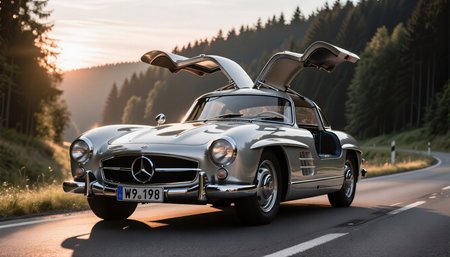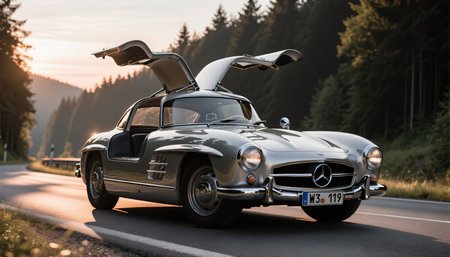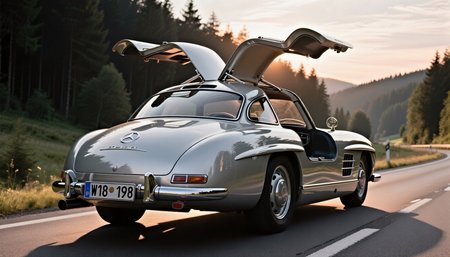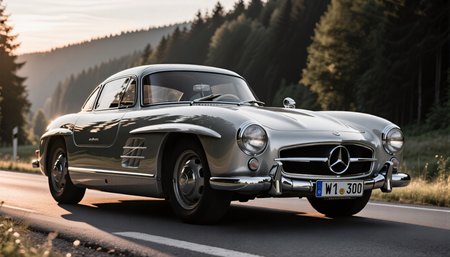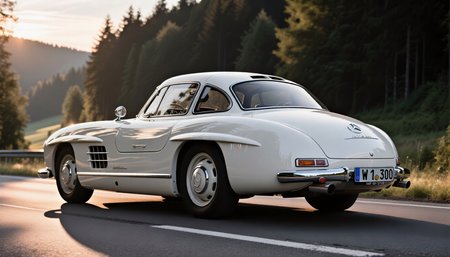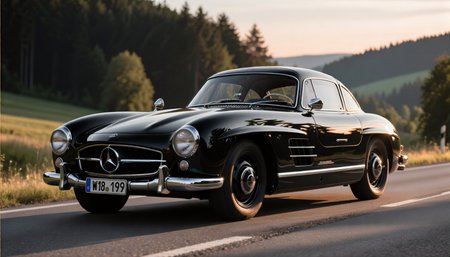The Silver Arrow for the Street: How the 300SL Gullwing Became an Icon
The Mercedes-Benz 300SL Gullwing, introduced at the 1954 New York International Motor Sports Show, stands as one of the most significant automobiles ever created. Its debut was a landmark event, signaling Germany's post-war industrial resurgence and a strategic pivot towards the booming American market. The car was not merely inspired by motorsport; it was a direct, civilized evolution of the all-conquering W194 sports-racing car that had dominated the 1952 season, winning at Le Mans and the Carrera Panamericana. The impetus for this transformation from racetrack to road came from Maximilian "Max" Hoffman, the influential New York auto importer, who placed a firm order for 1,000 cars, convincing a hesitant Daimler-Benz board to produce a legend.
At its core, the 300SL was a masterpiece of "race car first" engineering. Its defining feature, the iconic "gullwing" doors, was not a stylistic whim but a necessary solution to the car's revolutionary chassis: a lightweight yet immensely rigid tubular steel spaceframe. The frame's deep side members made conventional doors impossible, forcing engineers to hinge them on the roof. The car's other groundbreaking innovation lay under the hood. The 3.0-liter M198 inline-six engine was the first in a series-production automobile to feature mechanical direct fuel injection, a technology adapted from WWII aircraft engines. This system boosted power to a formidable 215 hp, a 40% increase over the carbureted racing engine, and made the 300SL the fastest production car in the world, capable of over 160 mph with the optional racing gear ratio. To fit under the low, aerodynamic hood, the engine was canted at a 50-degree angle, necessitating a dry-sump lubrication system—another direct link to its racing DNA.
While its performance was sensational, the 300SL demanded respect from its driver. The swing-axle rear suspension, a design carried over from the racer, could lead to treacherous snap-oversteer at the limit of adhesion. However, its impeccable build quality, luxurious appointments, and stunning aesthetics set it apart from all rivals, such as Jaguar, Aston Martin, and even Ferrari. It was this unique synthesis of uncompromised racing technology and grand touring usability that established the formula for the modern supercar.
Production ran from 1954 to 1957, with only 1,400 Gullwing coupes built. Among these, 29 were exceptionally rare all-aluminum "Alloy" versions, which are now the most sought-after models. Today, the 300SL is a pillar of the collector car market, with standard examples valued at over $1.7 million and alloy-bodied cars commanding many times that. Its legacy is immeasurable; it established the "SL" (Sport Leicht) dynasty for Mercedes-Benz, became a cultural icon owned by celebrities like Clark Gable and Paul Newman, and was voted the "Sports Car of the Century" in 1999. The 300SL proved that a car could deliver the authentic soul of a Le Mans champion in a package of unparalleled style and quality, forever changing the definition of a high-performance automobile.
Description
Initial release of the LoRA.
